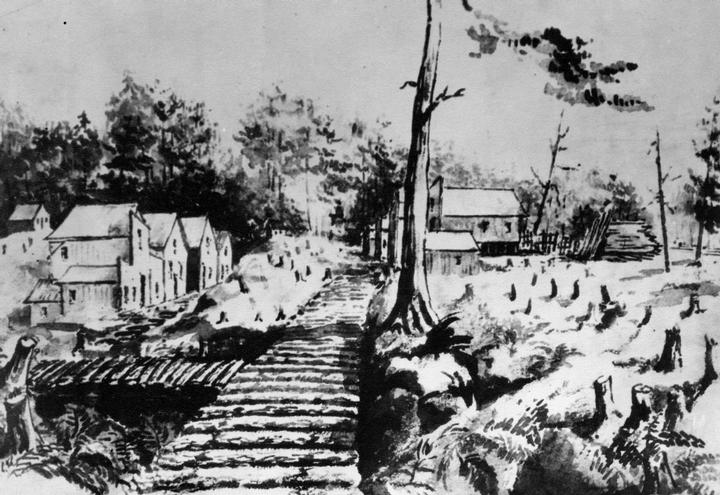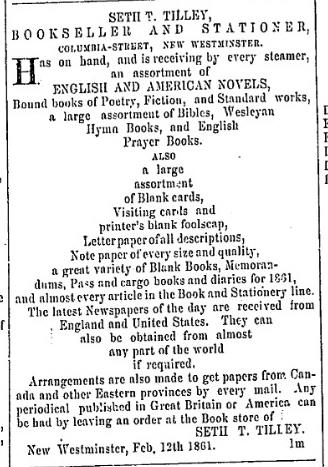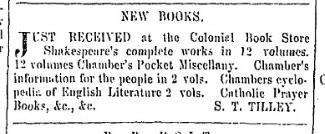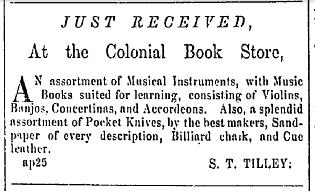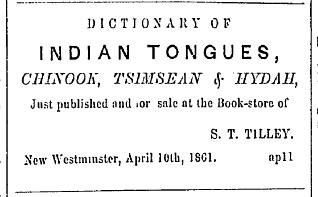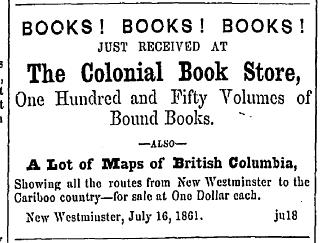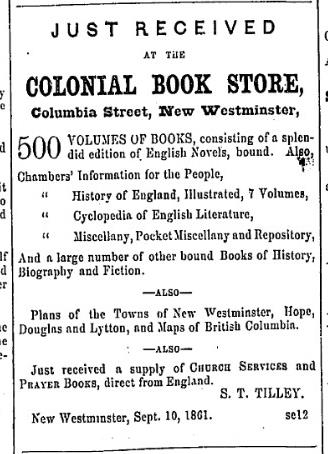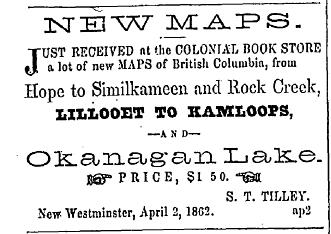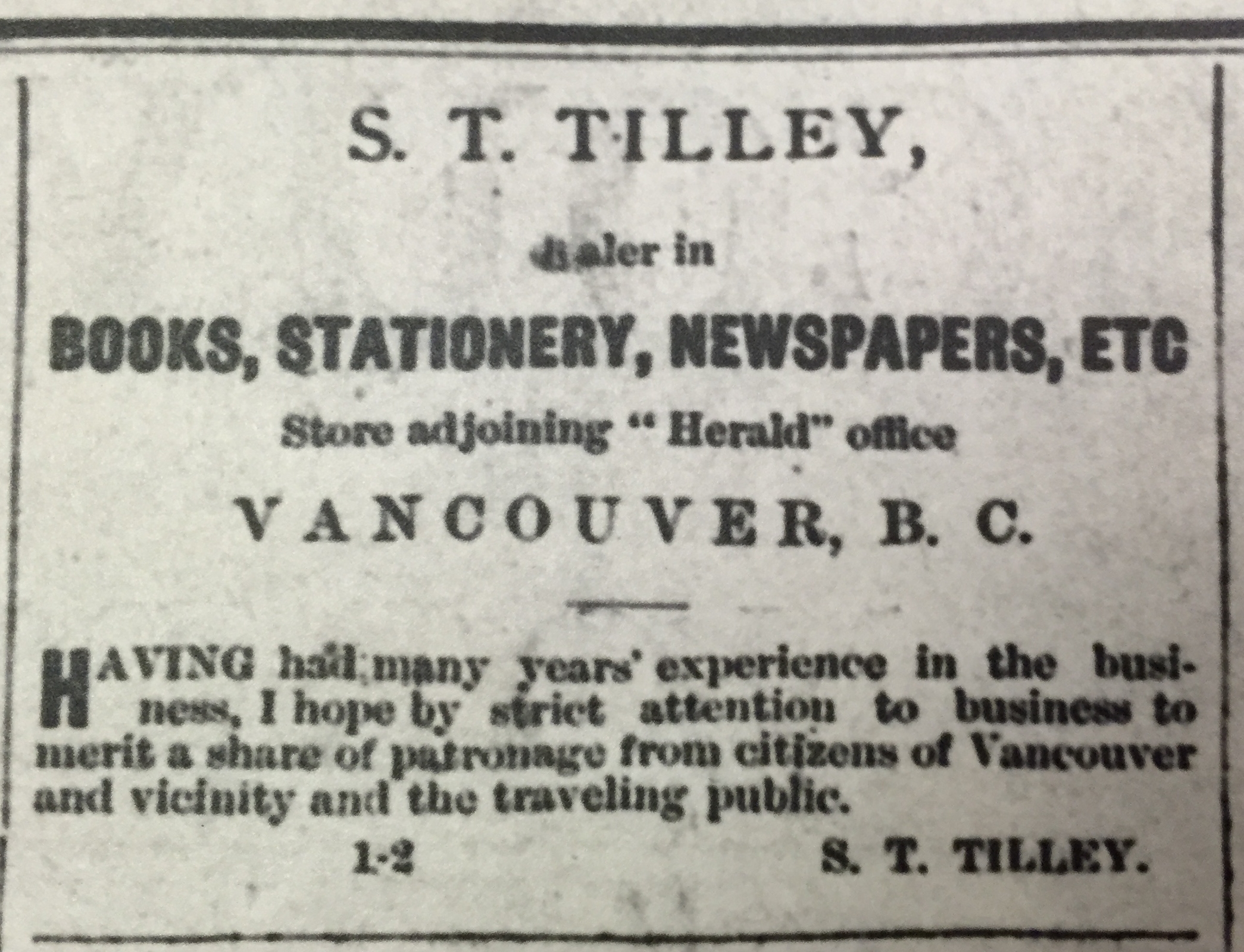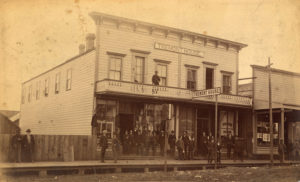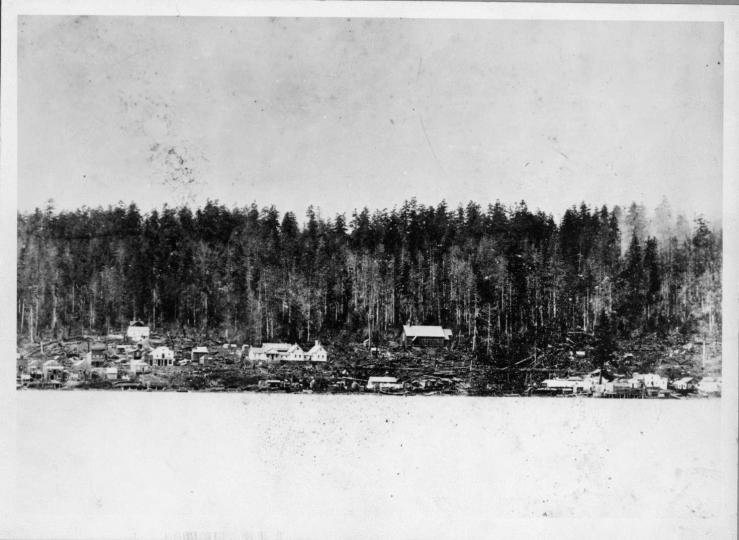
When Seth Thorne Tilley opened the Colonial Bookstore on Columbia Street in April 1860, New Westminster was little more than a rough clearing hacked out of the towering cedars and hemlocks, a scattering of wooden residential and commercial dwellings lining the Fraser River.
Born a world away, in Gagetown, New Brunswick, in August 1836 to a family descended from United Empire Loyalists and even further back from American settlers who had arrived on the Mayflower, twenty-three-year-old Seth Tilley was no stranger to the pioneer adventure. In 1855 he had joined his eldest brother William in Grass Valley, California, to try his hand at gold mining. The 1858 gold strike along the Fraser River had drawn him north, and he had staked a claim on Strawberry Island, above Hope (1).

Ultimately unsuccessful as a prospector, he opened a stationery store in Fort Hope in 1859. Then, on April 10, 1860, the British Colonist carried an announcement that he was setting up shop in New Westminster.
Through 1861 and 1862, Tilley’s ads in the New Westminster newspaper the British Columbian indicate an increasingly robust business (click on any ad to enlarge it; you may have to click it twice):
Tilley’s entry in the Biographical Dictionary of Well-Known British Columbians says that he made “a great deal of money” as a bookseller and stationer in New Westminster (2). But in January 1863, he announced in the British Columbian that he had sold the Colonial Bookstore to Victoria’s (Thomas Napier) Hibben and (James) Carswell, who were the most prominent booksellers in that city.
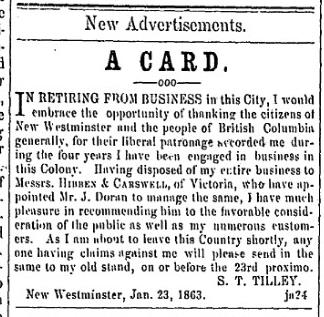
A newspaper notice in December 1863 tells us that he was “sojourning” in New Brunswick (presumably visiting his family or taking care of family matters). By January 1864 he was back in New Westminster, though he did not resume his work in the book trade there. Instead, he became the town clerk, assessor, and collector, as well as a partner in a furniture business with David Withrow (3). With politics in his extended family blood (his second cousin was Samuel Leonard Tilley, who would soon become one of the fathers of Canadian Confederation in 1867), he successfully stood for election as a member of the New Westminster municipal council in 1865. He resigned this position in 1866, though, and once again departed from New Westminster.
As I posted earlier, Tilley reappears in BC’s bookselling history in Vancouver in 1886. During the twenty-year gap, Tilley took another short stab at mining in the United States (4) before opening a book and stationery store in San Francisco. He subsequently moved to San Joaquin, where in 1870 he married Jeannie M. Bracken (5) and where his first child, Charles, was born in 1871 (6). Next he opened another bookshop in Santa Barbara in 1874, selling this business in 1876 (7). Tilley’s second child, Jennie (sometimes recorded as Jeannie) was born in Santa Barbara during this period (8).
The Tilleys returned to British Columbia between June 1880 and sometime in 1881, and Seth took on a series of demanding and mobile roles as government commissary between Port Moody and Kamloops, then in the same position for Andrew Onderdonk, who was overseeing construction of the Canadian Pacific Railway, and then on the Dominion Land Survey (9).
The Tilleys appear in the 1884-85 Directory of British Columbia as living in New Westminster; Seth’s occupation is shown as timekeeper for the CPR. With the completion of the railway becoming a near-term reality, perhaps he was already making plans to re-enter the book trade, this time in the city that he and many other speculators imagined would soon rise at the CPR’s terminus.
Notes
(1) John Blaine Kerr, Biographical Dictionary of Well-Known British Columbians (Vancouver, BC: Kerr & Begg, 1890), 305.
(2) Ibid.
(3) Ibid., 306.
(4) Ibid.
(5) Ibid.; Hand-book and Directory of San Luis Obispo, Santa Barbara, Ventura, Kern, San Bernardino, Los Angeles & San Diego Counties (San Francisco: L.L. Paulson, 1875), 120, 163.
(6) 1880 US census.
(7) American Bookseller, vol. II (July–December 1876), 327.
(8) 1901 US census.
(9) Kerr, Biographical Dictionary of Well-Known British Columbians, 306.
